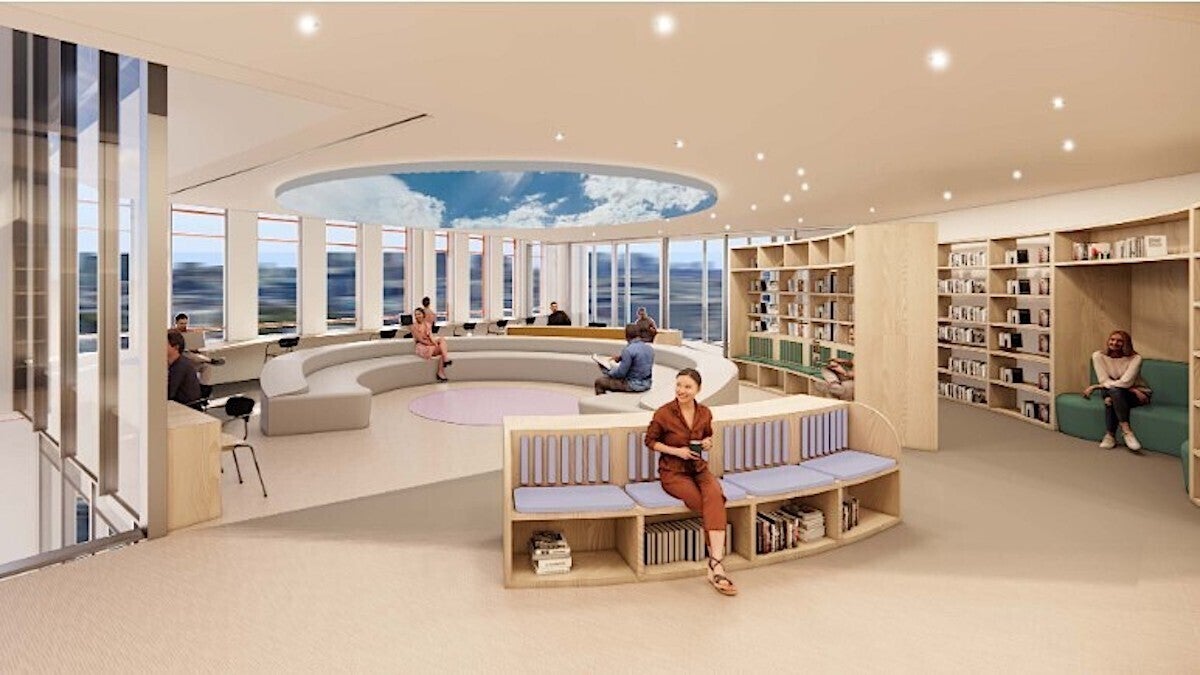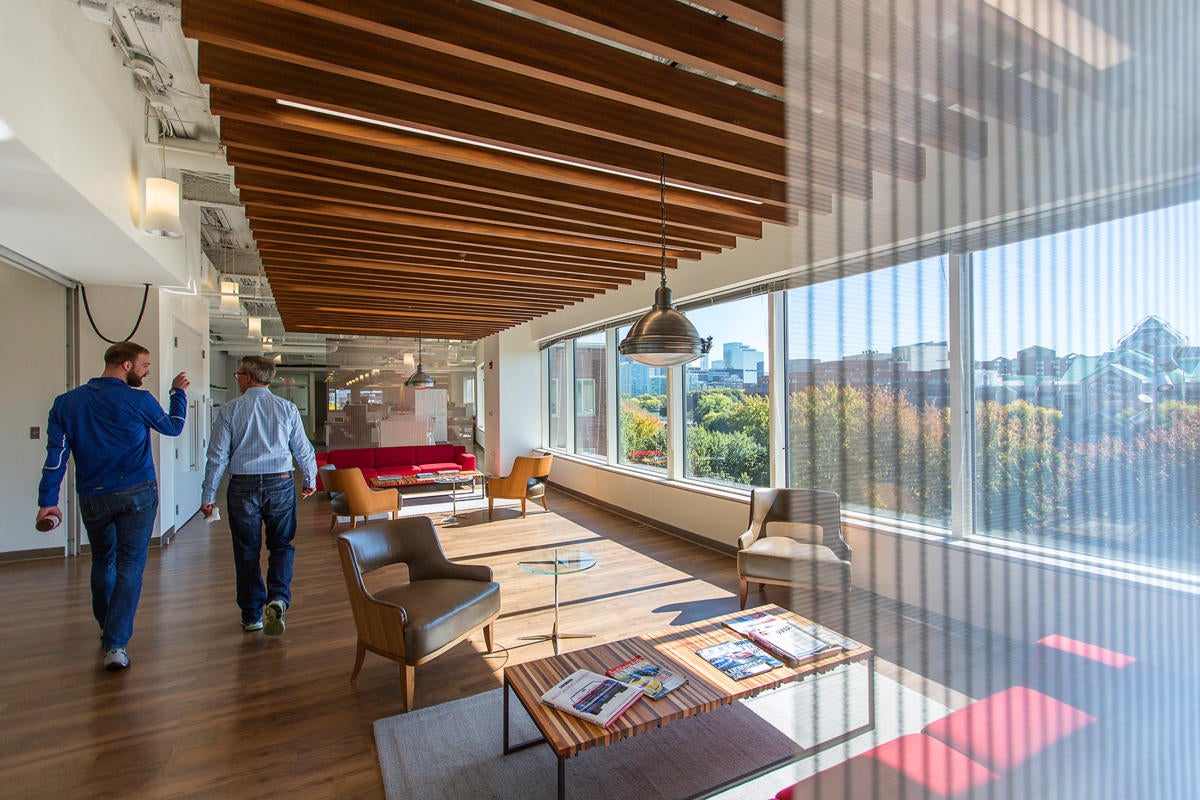Since January 2020, Google’s parent company Alphabet has spent nearly $100M on expanding its U.S. commercial real estate portfolio, including a $28.5 million office it bought in Sunnyvale, CA. at the height of the pandemic.
More recently, Alphabet announced in January it would spend $1 billion for a campus-like office setting in London.
“We'll be introducing new types of collaboration spaces for in-person teamwork, as well as creating more overall space to improve wellbeing,” Ronan Harris, managing director of Google UK wrote in a blog post. “We’ll introduce team pods, which are flexible new space types that can be reconfigured in multiple ways, supporting focused work, collaboration or both, based on team needs. The new refurbishment will also feature outdoor covered working spaces to enable work in the fresh air.”
The goal, said Harris is to offer employees flexible space with amenities to lure them back to the office, while recognizing many of them still want to work from home “a couple of days a week."
 BDG Architects 2021
BDG Architects 2021
Google plans to offer a quiet zone in its UK office for individual focused work — and an interactive art installation to support employee wellness.
The office expansion trend goes well beyond Google. In 2019, prior to the COVID-19 pandemic, US organizations purchased 60,346 commercial properties, according to Altus Group, a commercial real estate firm. That figure dropped to 57,174 in 2020, but rebounded last year to 78,354 properties.
And in the first quarter of 2022, organizations have already purchased 22,423 commercial properties. If that trend continues, the number of office buildings bought this year would surpass those snapped up in 2021.
“The numbers match Google's increase in accruing office space, so it seems The Great Resignation is not taking a toll on companies valuing office space,” said Ray Wong, vice president of Data Operations for Altus Group. “We’ve seen a lot of activity among tech firms taking on more space, not just buying, but leasing it. The Amazons, and the Facebooks, they’re all adopting the expansion strategy.”
 Robin Powered, Inc.
Robin Powered, Inc.
On average, employees booking time at their company desk has grown over the past three months.
The US initially shed 138.4 million square feet (MSF) of office space in the year and a half after COVID-19 was declared a global pandemic. Data showed more businesses began subleasing their space as the workforce became more agile. Given the uncertainty about how hybrid workforces will look, property owners and occupiers began offering shorter lease and sublease terms, according to a 2021 report from real estate firm Cushman & Wakefield.
The shorter lease terms turned out to be the right move as companies are now moving to reclaim that space.
Office sublease inventory has declined for the second straight quarter, according to Cushman & Wakefield’s latest report.
“There is no one standard for the future," Cushman & Wakefield said in their latest report. "Most organizations believe the office is now the place for building culture and for inspiring creativity and innovation."
Based on the 90 US markets tracked by Cushman & Wakefield, total leasing in Q1 2022 was up 19% from Q1 2021, and four-quarter rolling leasing activity is up 41% from a year ago. Class A office space leasing has accelerated even faster; it's up 47% year-over-year. With 349 million square feet of total leasing over the past four quarters, the US is back above its pre-pandemic historical average by 1.4%, according to the firm.
“One thing I’d say is, one size does not fit all. If someone is telling you everyone is shrinking space in the wake of the pandemic, that’s not true,” said David Smith, head of occupier research at Cushman & Wakefield. “Companies are rethinking how that space is oriented. They’re focused on collaborative space and different sized spaces. We are seeing companies that are looking to expand their portfolios. This an opportune time to do that. We’ve seen this with other recessions — lock in space for the long term with better rates or concessions.”
 Robin Powered, Inc.
Robin Powered, Inc.
As COVID cases dropped, office utilization rates climbed.
As organizations are beginning to figure out what a hybrid workforce will look like, many are expanding their square footage to create safer and more attractive workspaces that allow more area between desks, “hot desking" (sharing desks), large lounge or break areas, and larger outdoor spaces. They’re also hedging their bets that workforces will continue to grow over time as their businesses expand.
“Over time, compared to a year ago, there’s more of an openness to get back into the office and Google and real estate owners are looking at what kinds of amenities will attract people back,” Wong said. “With tech companies, they’re going to grow and they’re anticipating what that growth is. They’ve determined they need potential real estate down the road to meet their strategic objectives.
"The bottom line is, organizations are focused on flexibility.”
The tech industry remained the dominant leasing driver through the end of 2021, representing 21% of Q4 activity, according to Jones Lang LaSalle IP (JLL), a commercial real estate and investment management services firm. High-tech firms added about 3.3 million square feet of leased office space in the last three months of 2021.
“It’s not just tech firms," said Wong. "Some firms are expanding in anticipation of growth or re-aligning their space requirements to what they may need in three to five years from now."
Last month, the average occupancy rate on Kastle System’s Back to Work Barometer rose to 40.5%, up from 39% in November 2021. That's the highest rate since March 2020, and every city on the Back to Work Barometer saw occupancy gains. (The barometer measures occupancy rates in 10 metropolitan areas, including New York City, Chicago, Houston, and Washington D.C.)
Kastle Systems is a managed security provider to more than 10,000 companies globally; it uses employee badge-swipe data to determine workplace occupancy.
In a new wrinkle, organizations are now choosing to lease new or renovated buildings over older stock, which is more likely to be converted into residential space or senior living or assisted living facilities, according to Peter Miscovich, managing director of JLL.
Corporations are also adopting more of a collaborative space or "hot-desking" model, where desks are shared, depending on scheduled office workdays, said Phil Ryan, US research director at JLL.
Office usage is slowly climbing, primarily because employees' COVID-19 fears are easing and global companies are mandating some level of office attendance, according to Robin Powered Inc., a vendor of software that enables employees to book desk time.
US employees worked from the office an average of 4.9 days per month, up from 3.7 days as recently as December 2021, according to a new report from Robin. "...It’s good to see a slow and steady build, even as the Omicron variant slowed growth in this category in January,” said Eric Lani, Robin’s manager of product analytics.
Both the US and Europe saw an 18% increase in the total number of employees working from the office in Q1 2022 compared to the final three months of 2021, according to Robin.
“These numbers don’t tell the whole story,” Lani said in a blog post. "Despite consistent growth rates, the average daily occupancy rates for the two regions are very different. US businesses experience 25% office capacity while Europe sits at 35%, which indicates EU team members work from the office more frequently."
Bounce rate — the percentage of people coming into the office only once during a 30-day period — dropped to 18% in Q1 2022, the lowest since the spring of 2021, indicating that people are coming back to the office more consistently, according to Lani.
Office traffic isn’t just limited to employees. The average company welcomes roughly five guests per month. The most common guest types are corporate event attendees (20%) and customers (15%), according to Lani.
Companies that want people in their cubicles should focus on carrots, not sticks, according to David Lewis, CEO of OperationsInc, an HR consulting firm in Connecticut. In other words, let employees themselves discover the benefits of being in the office instead of forcing them to be there.
While office attendance remains below pre-pandemic levels, it continued to rebound through March, according to Cushman & Wakefield, with reimagined workspaces likely to drive additional demand throughout 2022.
Employees who had a positive experience during their first office visit came in 10% more often than those that had a negative experience, according to the study by Robin Powered.
The in-office recovery will be differentiated by building quality, class, and submarket type. To date, suburban submarkets have been recovering slightly more quickly, and Class A office space continues to be in higher demand. Class A offices are the most prestigious buildings competing for premier office users with rents above average for a given area.
 BDG Architects 2021
BDG Architects 2021
A planned space for Googlers to pause for a coffee break or have a quick one-to-one visit in sound-protected booths in the company's UK office.
“Workers want a quality of experience in the office,” Cushman & Wakefield’s Smith said. “They want better air quality and access to outdoors, and they want to be in the best locations. All those things are more important in an agile work environment, and to make the office worthwhile and productive for the worker.”






